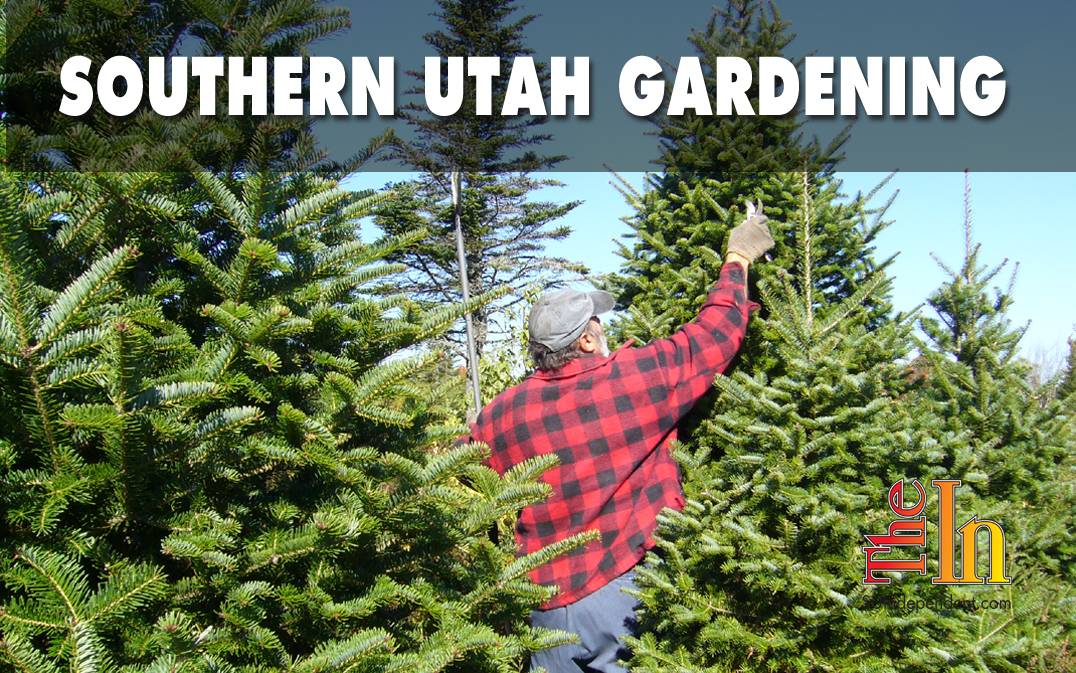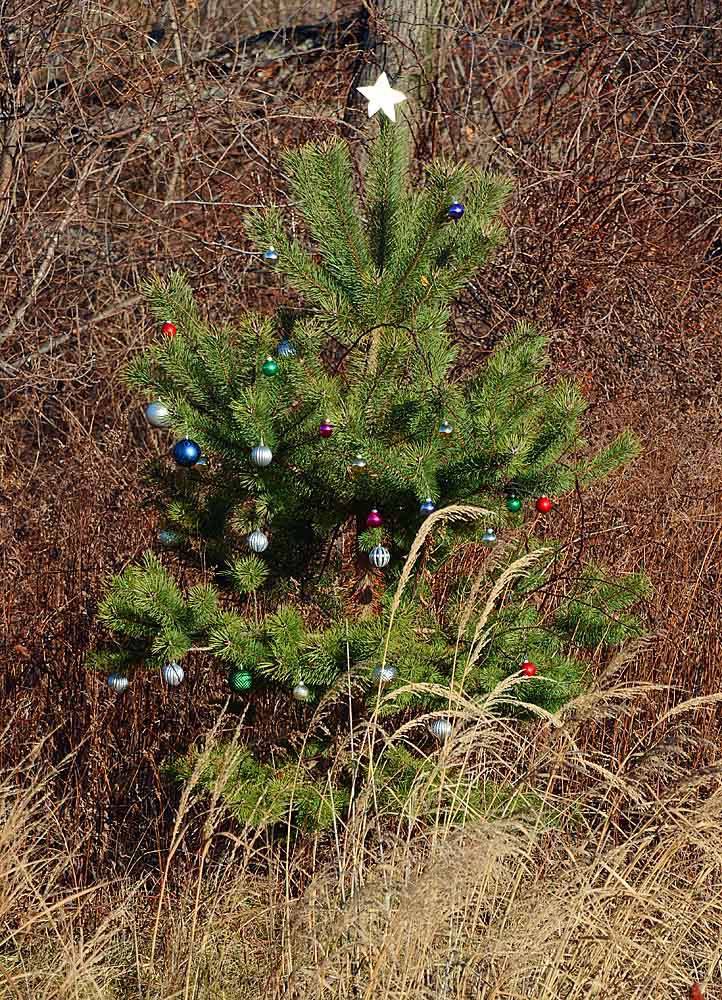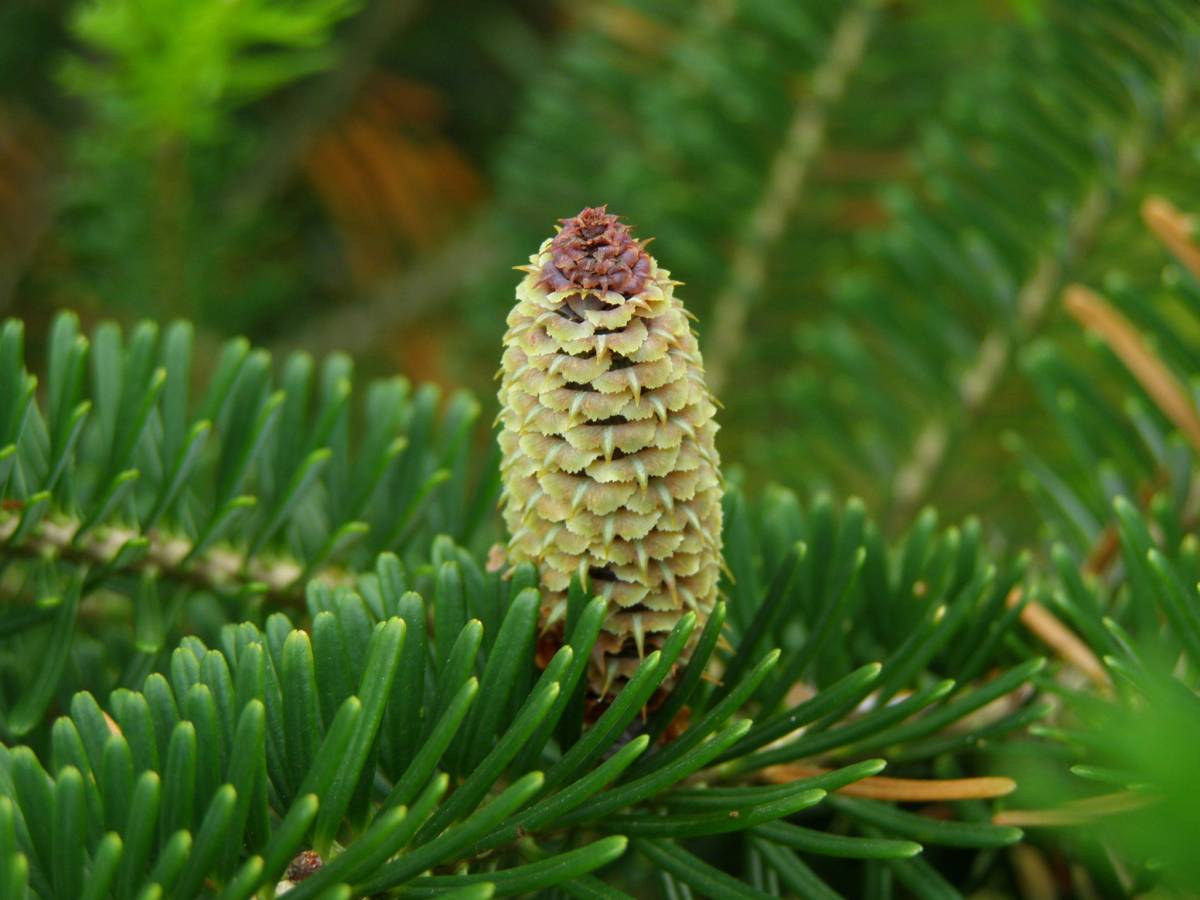
Have you ever thought about having a living Christmas tree? You know, a living tree, in a pot, that you decorate for the winter holidays and then plant in your yard or garden. It is a very cool concept. No tree loses its life to decorate a house or business only to be tossed in the trash … or to sit somewhere in your yard way longer than it should. We’re all guilty of that, right? I’m going to throw a few ideas your way for choosing a living Christmas tree and give you some tips on caring for and then planting it so it stays alive.
I used to think a living Christmas tree had to look just like a regular cut and dying Christmas tree. I now think you can choose a living Christmas tree based on what kind of tree you desire in your garden, be it a deciduous fruit tree, a magnolia, or a pinion pine. Other options include, but are not limited to, Italian cypress, Blue Atlas cedar, Deodar cedar, Mondel pine, Italian Stone pine, Aleppo pine, Wichita Blue juniper, and Blue Arrow juniper for low elevations. High-elevation options include Colorado Blue spruce, Dwarf Alberta spruce, Bosnian pine, Scotch pine, Ponderosa pine, Austrian pine, Limber pine, and the previously mentioned junipers. The beauty of this idea is that you get to choose.

This might take some cajoling or bribing of the other members of your household to get on board with an unconventional Christmas tree, but why not give it a try? Check local nurseries like Ballard’s, Ali’s Organics, and Star Nursery for what is available in Washington county. Also consider heading to Big Trees Nursery in Kanarraville or Lady Bug Nursery in Cedar City. They both carry trees for high elevations as well interesting options for low elevations.
After you have chosen your living Christmas tree and taken it home, spray it off with the hose to remove any debris or insects. This will also water the tree thoroughly. Your living Christmas tree should only be inside your house for about 10 days. Any longer and the tree’s dormancy will be confused by the indoor heat, which will lead to acclimation issues when you return it outside after Christmas. Choose a location in your house, avoiding heat registers and fireplaces as these will dry out your tree and make it too warm.
For aesthetics, set your living Christmas tree in a ceramic pot, or choose any decorative object that might suffice as a container for the short time this tree will be in your house. Just remember to utilize a plastic saucer under whatever container you select to avoid water leaking onto your floor.
To water your living Christmas tree, simply put several ice cubes on the surface of the soil each day. This will keep the soil perfectly moist without over-watering or causing water to overrun the saucer. Decorate as desired, and enjoy your living Christmas tree.
When it’s time to take down your Christmas tree, gradually moving it into the wintry outdoors will reduce the risk of frost damage. Move the tree to a spot where you can leave it outdoors during the day and in the garage during the night. After a few days of this special treatment, you can move the tree to a protected spot on an eastern- or southern-facing patio. Remember to continue watering your tree while it’s outside.

After a few days in this protected location and when you are ready to dig a hole, you may plant your living Christmas tree. Dig a hold twice as wide as the pot in which the tree has been growing. Add organic matter, such as compost, in a 50:50 mixture to the soil removed from the hole. Remove the tree from the pot, and lightly disturb the root ball to encourage new root growth. Then place the tree in the hole and backfill it with the compost soil mixture, tamping down the soil around the root ball.
Keep the top of the root ball exposed to ensure water always reaches the roots when the tree is watered, and go ahead and water thoroughly. I like to use Superthrive to supplement the first watering of newly transplanted trees, and think of it like an anti-anxiety vitamin for plants. Continue to water your tree throughout the winter when the top inch of the soil that was in the pot is dry. Early in the spring, fertilize this tree and your other trees with your favorite fertilizer, always following the label directions.
A living Christmas tree is a the perfect holiday tradition to begin this year. Visit a nursery and see what’s available and what appeals to you. Remember, you’re avoiding convention and you can choose any tree — or any plant for that matter — that strikes your fancy. I have a lemon tree in a pot that spends each December and January in my house, and one year it was my Christmas tree. A string of lights, a few ornaments, and several ripening lemons made an amazing holiday tree and a great conversation piece. Welcome to southern Utah gardening in winter.




I have always liked the idea of a living Christmas tree. And now I know how to do it. Super informative article! Thanks!